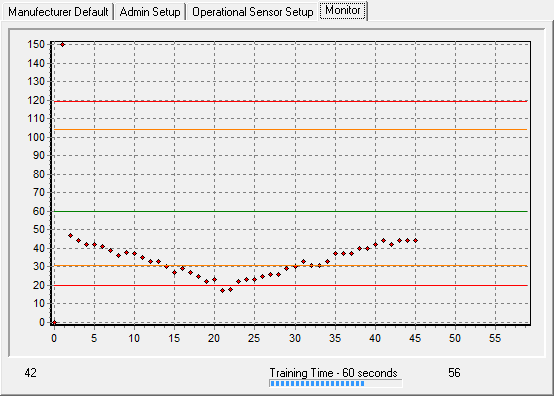Continuous Alarm limits
An alarm condition is defined by three preset threshold values:
- Low parameter value that defines a threshold for alerting about a risk
- High parameter value that defines a threshold for alerting about a risk
- A time delay that defines a threshold for deciding that the extreme patient values are consistent.
The first two values define safety ranges. A safety range is the interval between the lower and upper risk limits.
Safety range
Two risk intervals define three safety ranges:
- High safety range is the interval between non-extreme parameter values. This range defines situations of no significant risk.
- Medium safety range is the two intervals between the extreme and non-extreme parameter values. This range defines situations of low risk.
- Low safety range is the two ranges of values beyond the extreme values. This range defines situations of high risk.
Example - Diastolic BP

Safety ranges in this example
- High safety (no risk) is when the patient parameter is in the interval between 20 and 105
- Medium safety (low risk) is when the patient parameter is between 20 and 30 or between 105 and 120
- Low safety (high risk) is when the patient parameter value is higher than 120 or lower than 20.
Time delay
An alarm condition occurs if within a period exceeding the preset time delay, the value of a patient parameter remains outside of the safety range.
Alarm condition
Suppose that the time delay threshold is set to 5 seconds.
In the example, a low risk alarm signal should be generated between the 20 and 30 seconds.
High risk alarm signals will not be generated, as the high risk measurements do not exceed the time delay threshold.